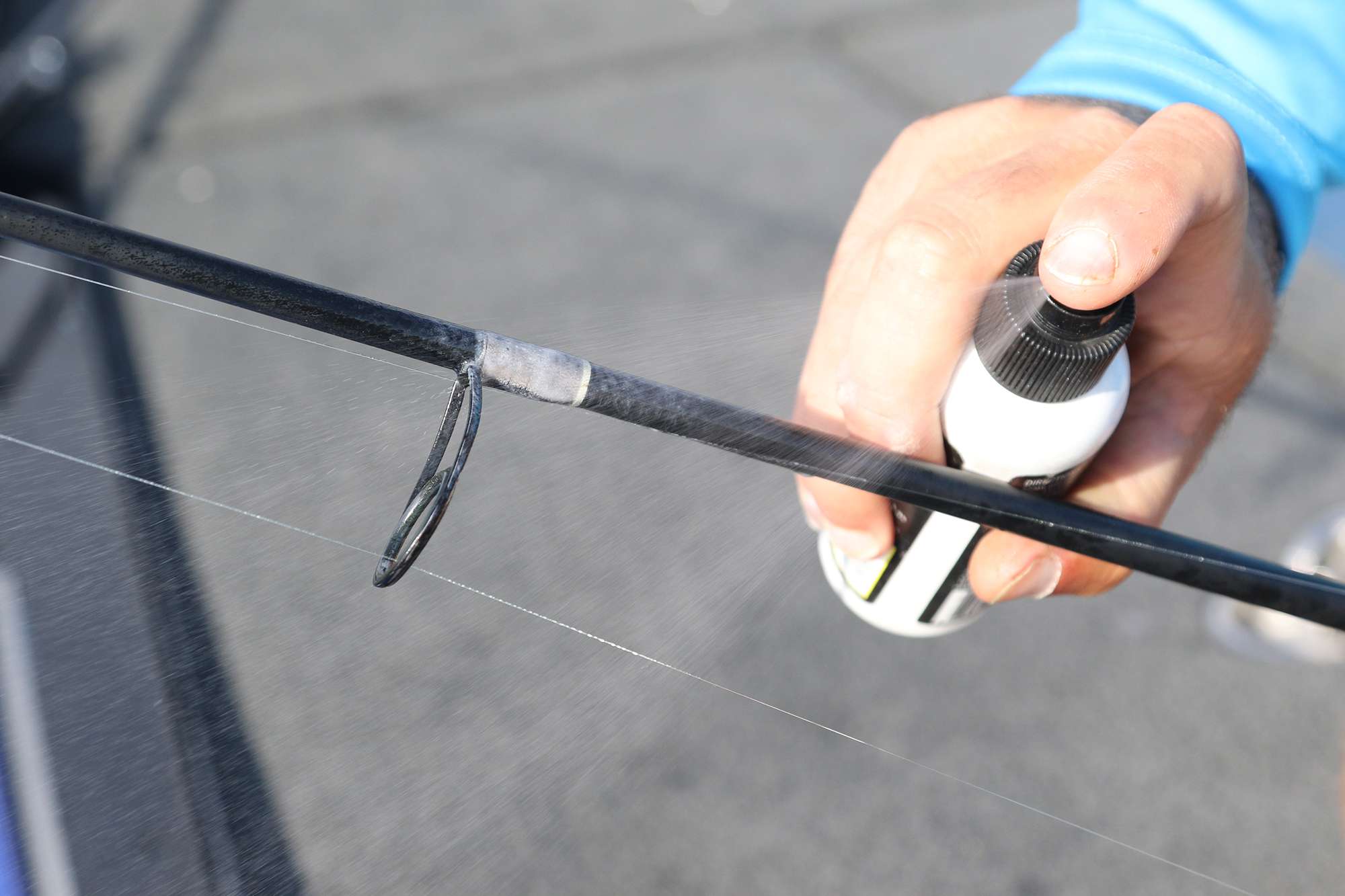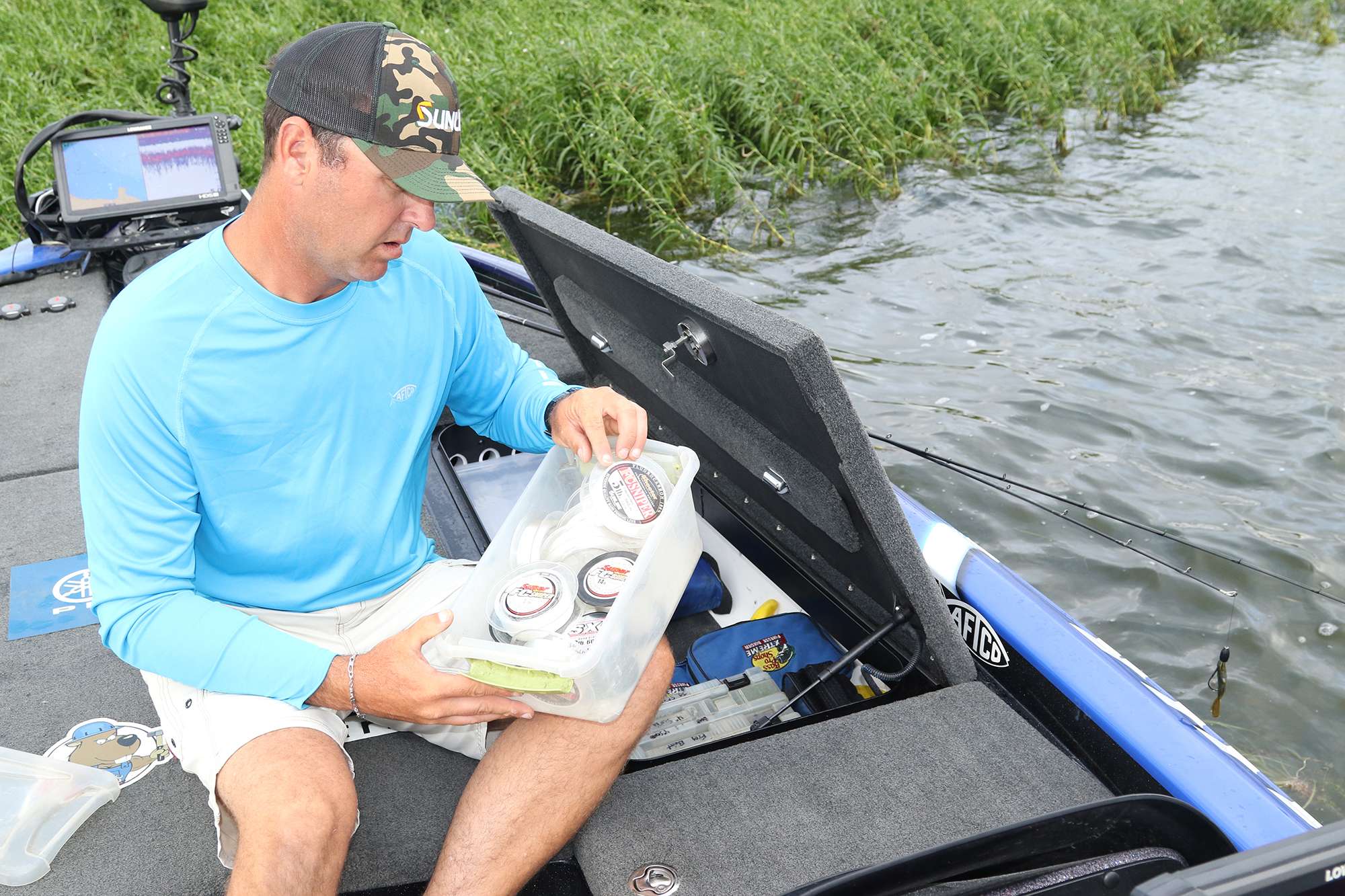
Fishing’s inherently dynamic nature just about guarantees that a day’s success will require some form of adjustment. Changing bait colors, hooks and weight sizes are commonplace, but changing line on the water is an often daunting skill set that every angler should master.
Maybe you need to upsize or downsize to fit water clarity or strategic sink rates. Maybe the sky’s grown dark and you could benefit from a high-vis line. And, as we all know, nicks happen.
Whatever the case, the ability to expeditiously replace line on the fly ensures a seamless and time-efficient operation by keeping you in the moment with the specific outfit you need.
Now, surely, just about everyone who actively respools afloat has their own method; from holding the filler spool between their feet to using a plastic container to maintain tension. Pro Todd Faircloth’s no exception, and he recently demonstrated his well-conceived technique.
For starters, organization equals efficiency so Faircloth stores a selection of Sunline fluorocarbon, monofilament and braid in a latching plastic bin that fits securely in one of his rod boxes. He’ll stock this container with the likely line choices relevant to the fishery with the common denominator being his backing spools. (More on this in a moment.)
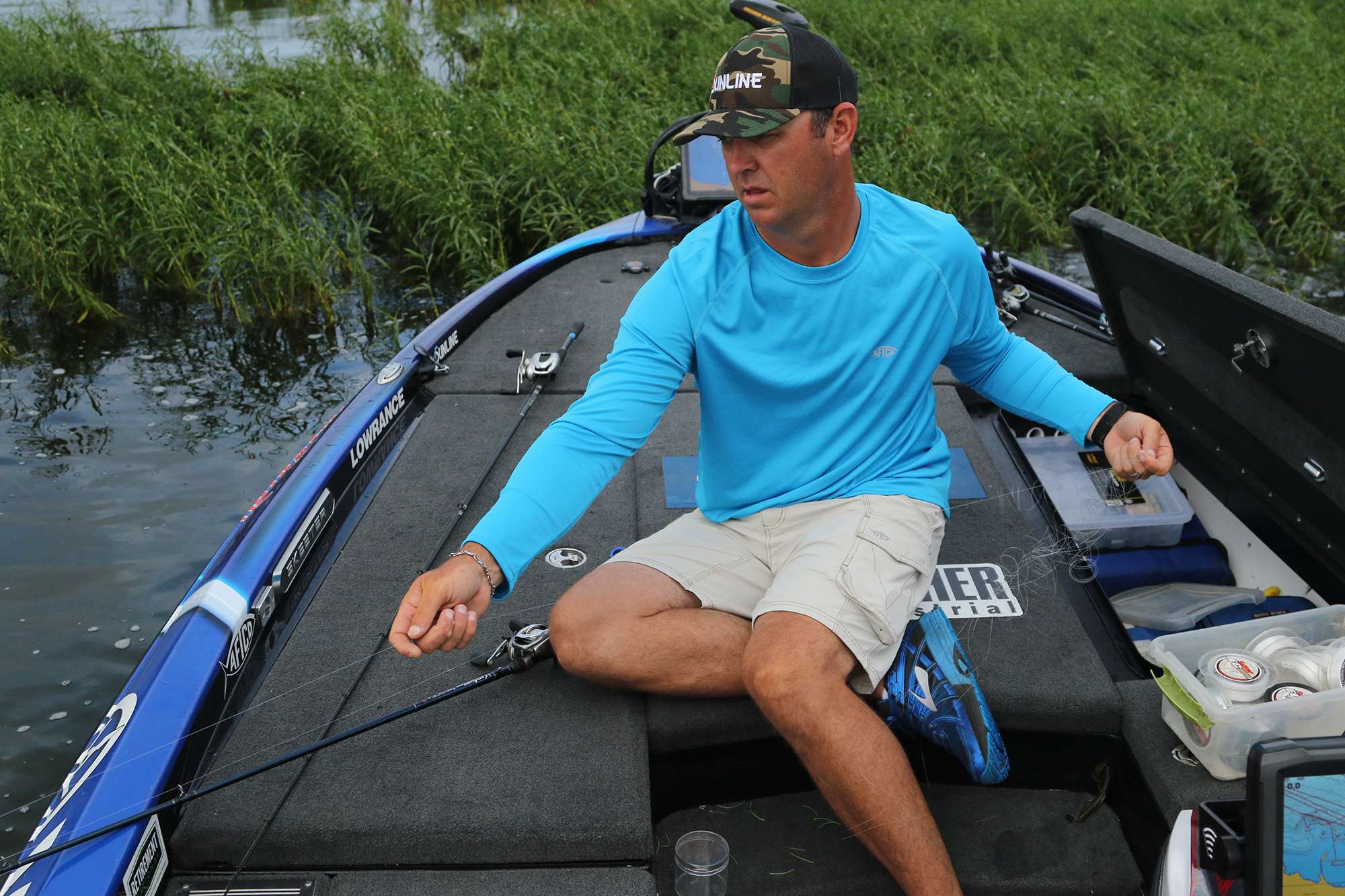
Out with the old, in with the new
When stripping existing line from his reel, Faircloth lays the rod on his deck and sits on the rear grip to hold the outfit securely, while he pulls off line in long hand-over-hand strips. It almost resembles climbing a rope from a sitting position, but his method delivers maximum return for the effort.
Typically, the stripping process doesn’t take long, as Faircloth only needs to go halfway into his spool. The rest is backing.
“When I’m putting backing on my reel, I always start out with monofilament or fluorocarbon and I’ll put one or two layers of that on the bare spool,” he says. “The reason for that is that braid will slip on a smooth, slick spool, but fluorocarbon and monofilament won’t.
“After that, I’ll go with 60-pound Sunline braid for my main backing. You don’t want to put a really small braid backing on there because the main line will want to dig into it. The thicker, broader braid makes for a more even keel and the main line won’t dig in.”
For simplicity and minimal profile, Faircloth links his backing to his main line with a simple overhand knot. He finds that filling his spool about halfway with the braid backing is sufficient.
“It’s not necessary to fill your reel with the line you’re using (for a particular application),” Faircloth said. “If a fish gets you down to halfway on your spool, you’re in trouble anyway.”
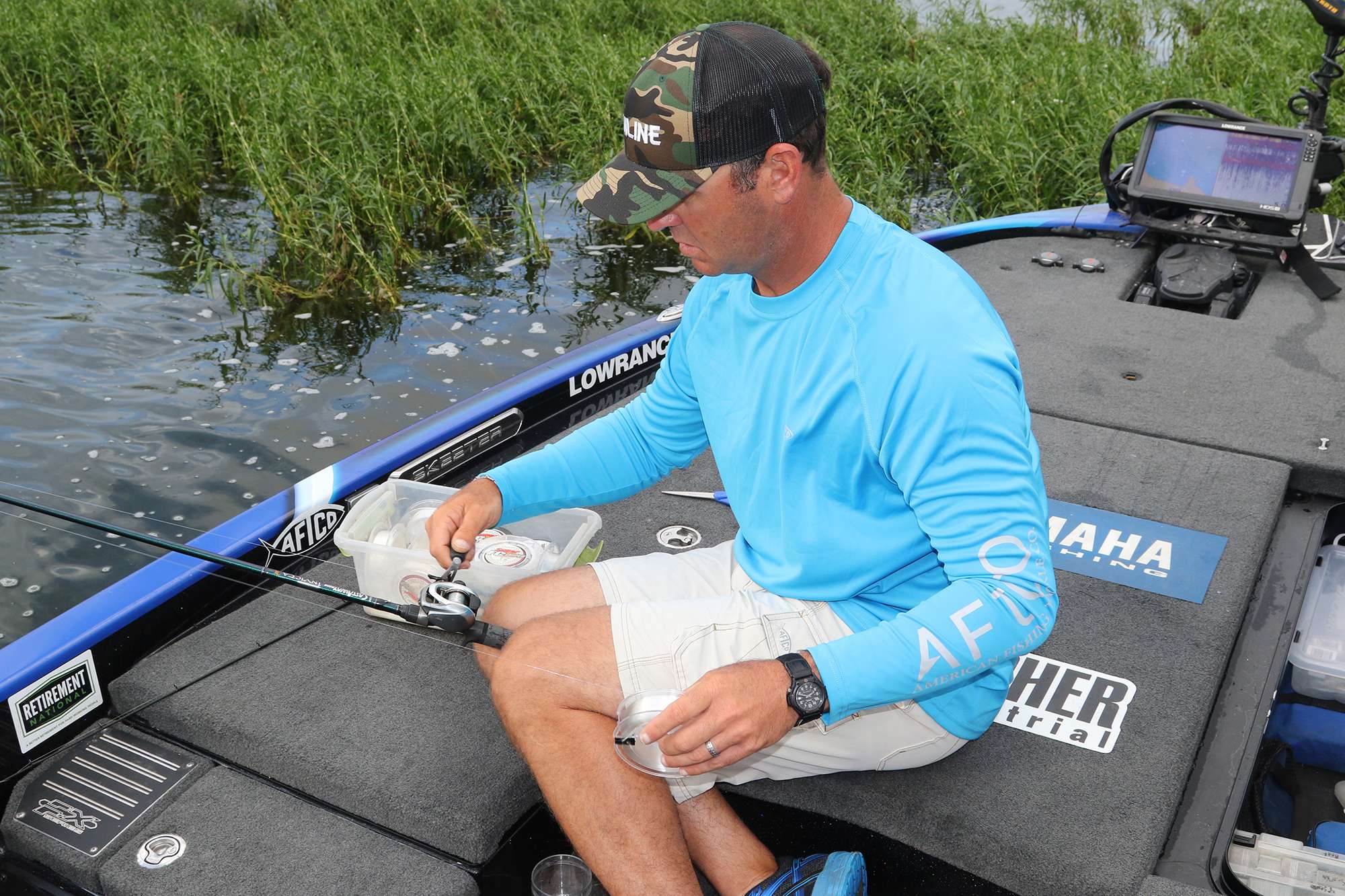
Posture and pressure
Faircloth feeds the new line through his guides, top to bottom, ties it to the backing and positions the rod for spooling on the new line. Clinching the rod butt between his knees allows him to reel with his right hand, while holding the filler spool to the side with his left.
“I like to put pressure on the spool, while a lot of guys like to put pressure on their line, because I have total control over what’s going on there,” he said. “Also, whenever you’re putting pressure on your line in front of your reel, at some point, you’re probably going to favor one side or another and that creates and unequal spool. You’ll have one side that’s bigger than the other.
“When you let the reel work the process and you just hold tension on the spool, the reel will evenly distribute the line across your spool and that makes for a lot better casting.”
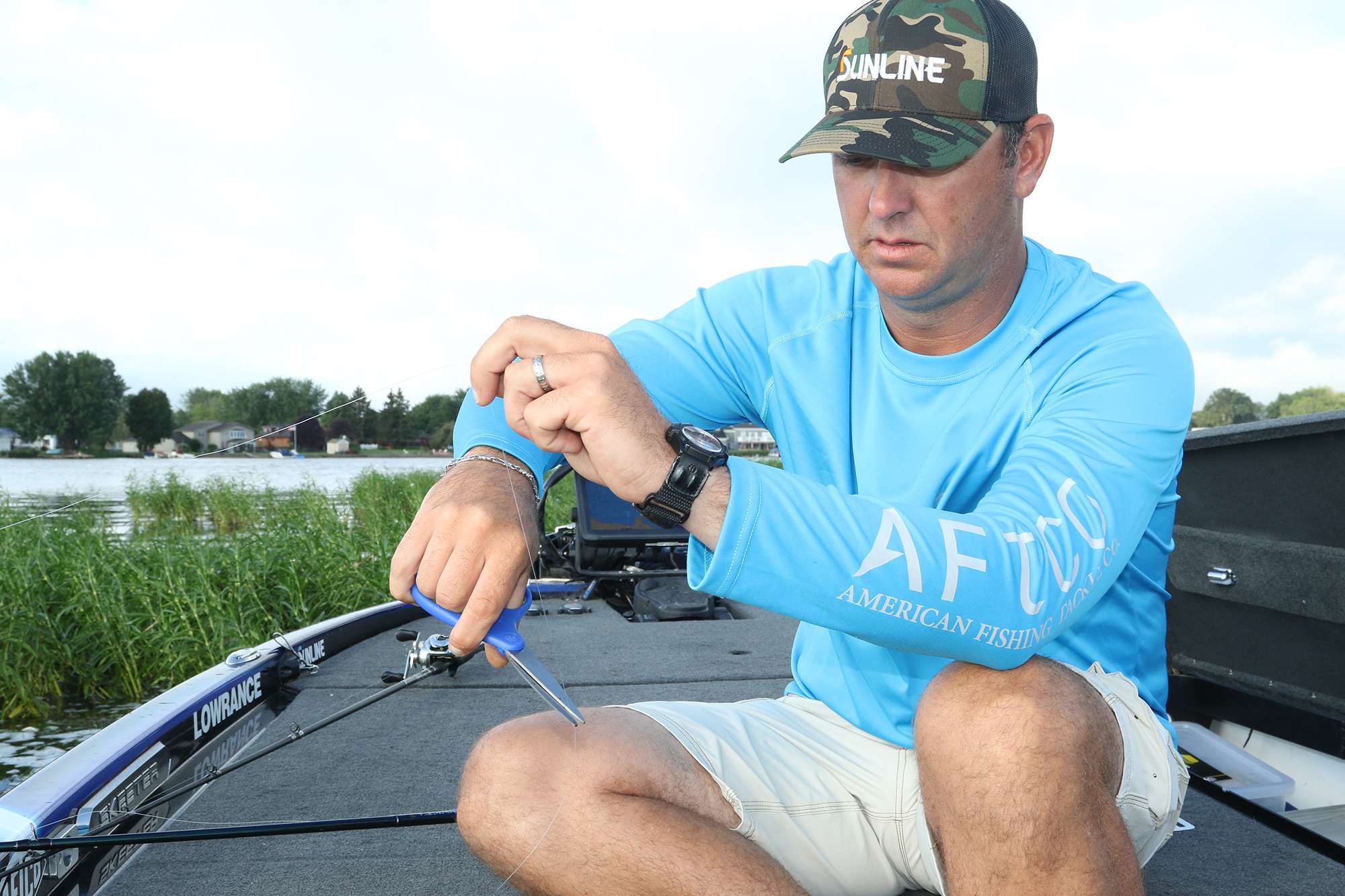
Harsh times
Now, the decision to respool takes into consideration several factors. First one is straightforward — do you need a different size, color or type of line? If you’re good there, the next criteria is line condition. Fishing around heavy cover, abrasive rocks or sharp edges such as zebra mussels raises the potential for line damage, so frequently run the last few feet through your fingers to check for nicks, burrs or abrasions.
Note: Nicks can occur on decks and in rod lockers, so assume nothing.
If it all passes inspection, then Faircloth’s going to evaluate frequency. If a particular setup is doing most of the work, he’ll often choose to respool on-site and prevent possible stress-related break-offs.
“A lot of it depends on line diameter,” Faircloth said. “If I’m using a spinning rod with 10-pound Sunline braided main line and a 6- to 8-pound fluorocarbon leader a lot during a tournament, I may respool during the course of that tournament. Regardless, I’ll obviously redo that leader at the end of the day.
“Now, with the bigger braids and fluorocarbons, if I use, say a 14- or 16-pound line and I fish it pretty hard that day, I’ll respool it for the next day. But if I just periodically use something, I’m not going to respool every rod and reel I use during the course of that day.”
The exception, Faircloth notes, would be backlashing mono or fluoro. No judgment, it happens, but even if you can successfully pick out the bird’s nest, the ordeal often leaves sneaky little nicks and weak spots that invariably assert themselves at precisely the wrong time.
We’ve all seen it, and it’s never pretty. You load up for a cast, swing forward and there goes your bait — with a small sampling of your line.
Worse yet, a big fish comes tight; digs, digs, digs; you finally get it heading topside and then POP!
No discussion; it’s over. Cue the silent storm.
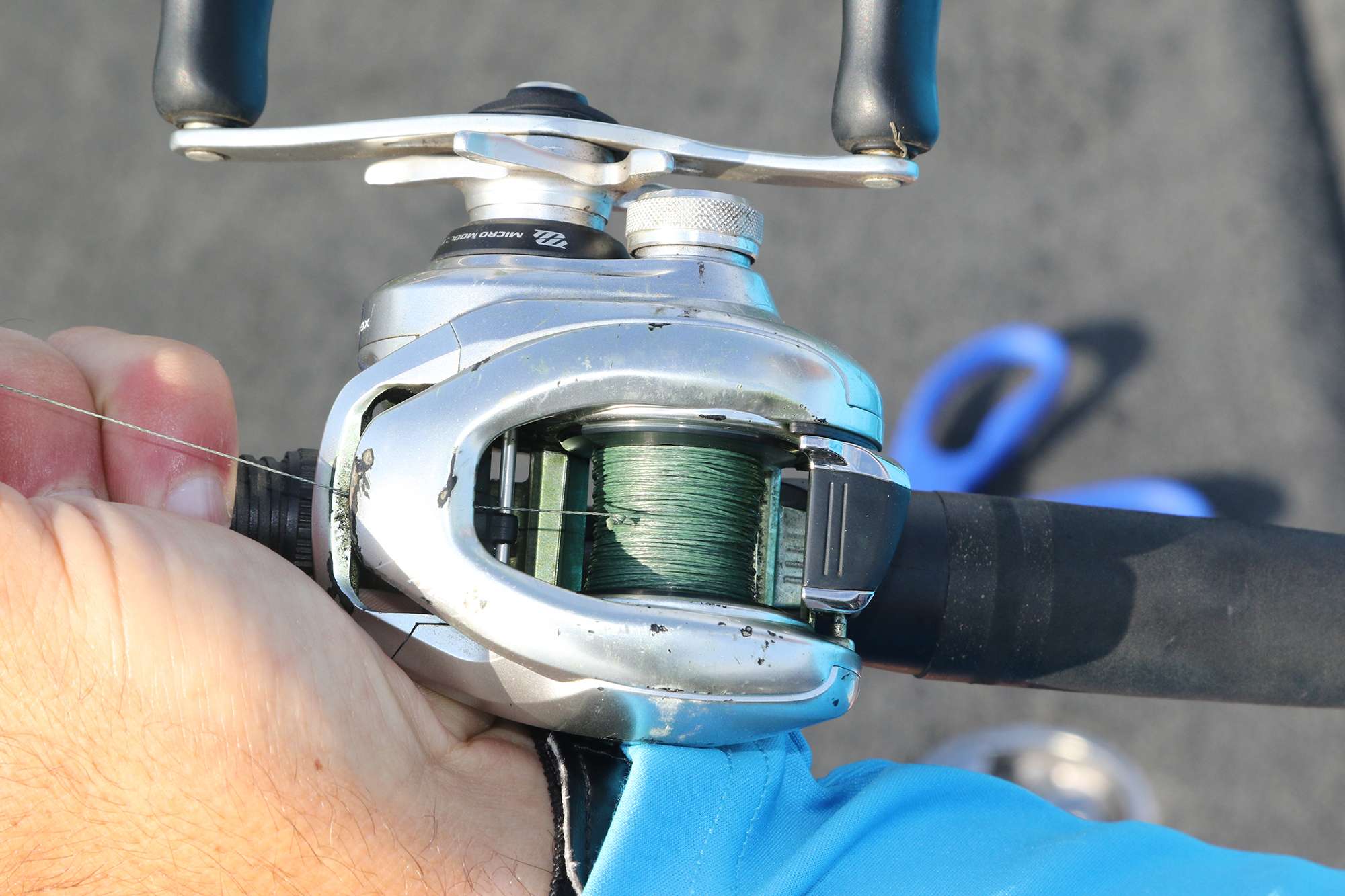
Maintenance moves
Over and above his damage assessments and replacements, Faircloth has a couple of tips for keeping your fishing line game-ready.
“If you start seeing some memory in your line, you can anchor it off to something like your truck or boat, spool out a little bit more line than you’d make on a long cast and just stretch it out,” he says. “A lot of guys will drag line behind their boat; it’s the same concept. It will get that memory out.
“Once you stretch it out, hold the line between your fingers while you reel it in, and if you don’t feel any nicks or kinks, that line’s good to go. Now, if you feel a bad spot in it and you still have enough line on your spool, just cut it off at that bad spot.”
As far as line lubricants, Faircloth has no beef with spraying a spool, but he’s more likely to just hit the rod guides to minimize buildup from all the water-born gunk his line collects.
